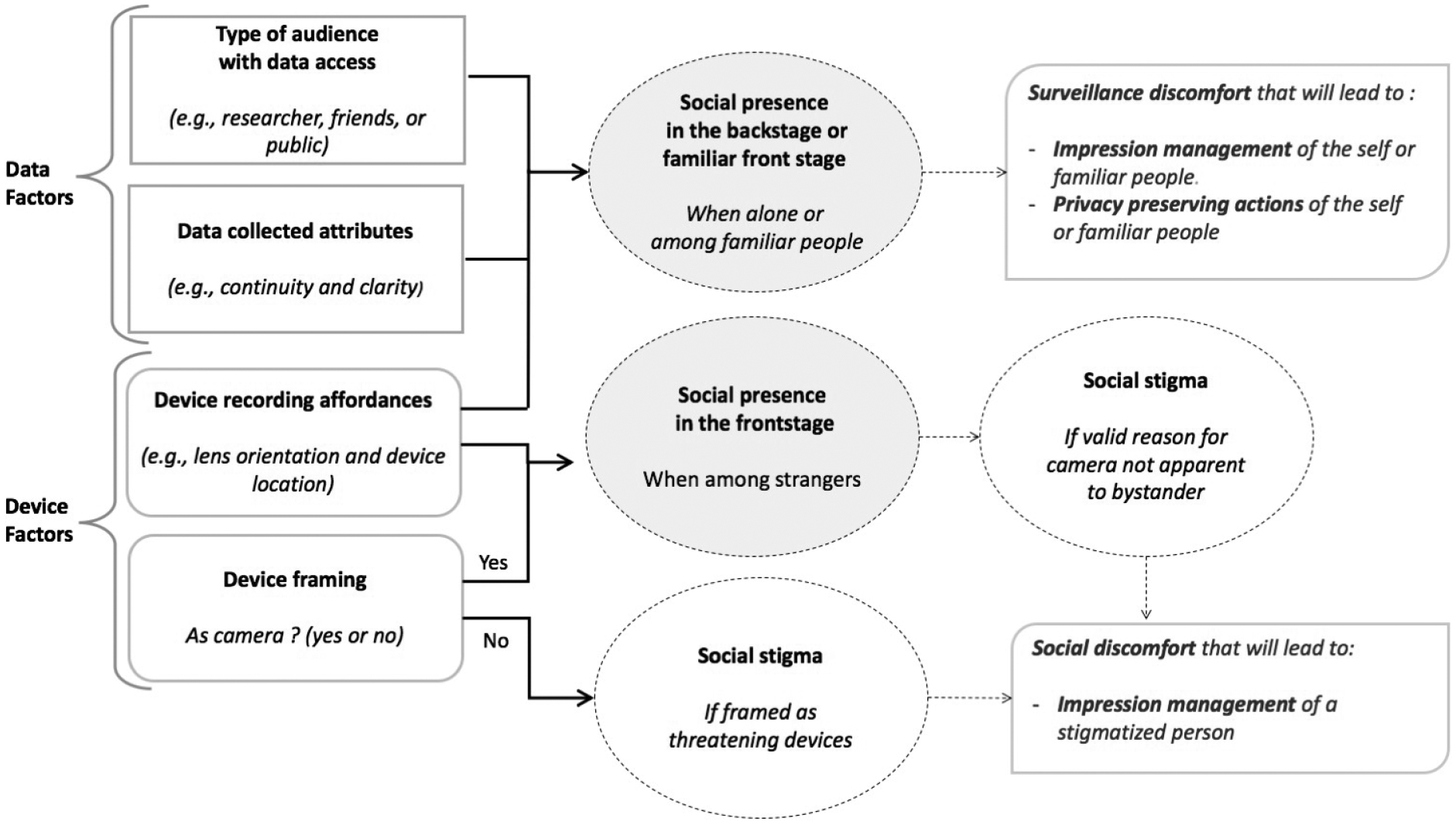Fig. 4.

Our proposed model explains the factors that influence perceived social presence and stigma. When the camera is worn while alone or among familiar people, privacy-preserving techniques applied on data-related factors (such as restricting data attributes and limiting the type of people who have access to data) can decrease social presence both in ego-centric and activity-oriented cameras (if these settings are known by the wearer and bystanders). However, when among strangers, communication of privacy-preserving techniques on data factors is not feasible. Therefore, only device recording affordances based on visible characteristics can affect social presence among strangers. Unlike the ego-centric camera, activity-oriented cameras can reduce social presence among strangers via device recording affordances. Changes to device recording affordances and framing - especially ensuring that a device is not perceived as threatening - in turn, reduce social stigma.
